Cricket
Labuschagne as third fast bowler is really un-Australian.
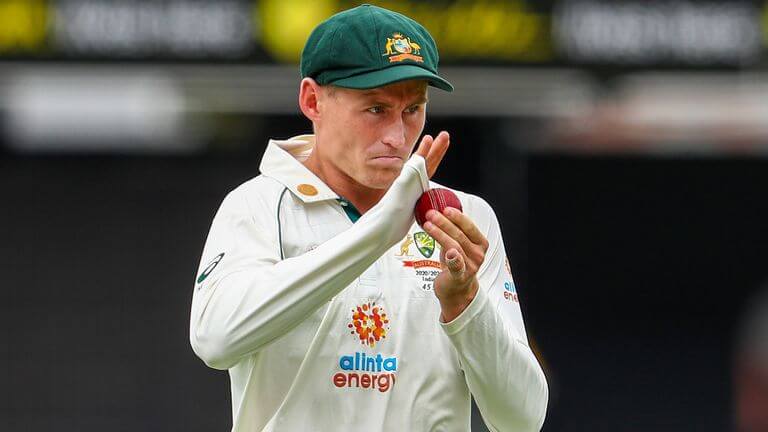
Australia has an advantage because they won the toss, but for a team that is rarely seen at home, the next four days will be very interesting.
When Marnus Labuschagne marked out his medium-pace run-up with Pat Cummins and Josh Hazlewood, maybe not entirely seriously, before the first day of play at the SCG, you could tell this wasn’t going to be the usual balance for an Australia Test team at home.
It was one of the most interesting weeks leading up to a Test in this country because of the weather and the injuries Australia had, especially Cameron Green’s, and the fact that they had to basically replace two cricketers.
One tradition of the New Year Test is to argue about whether or not two spinners should be used. Both teams went that way this time. Australia surprised a bit when Ashton Agar put together a four-man attack with only Cummins and Hazlewood as quicks.
Putting aside for a moment how bad their batting was, it seemed like South Africa had the better balance of attack with Simon Harmer, Keshav Maharaj, and three fast bowlers. It was the first time since the Super Series Test in 2005 that both teams went with two frontline spinners.
Labuschagne said of a dry pitch that was already turning, “I don’t think I’ve ever played on a wicket that turned from the middle as much as it did today.”
Australia’s Hazlewood was coming back from a side strain, and in two of the four Tests this season, one of their fast bowlers was hurt and had to leave the game (Cummins in Perth and Green in Melbourne; Mitchell Starc fought pain to keep going). It seemed like a risk to put all the fast bowling in the hands of just two people.
But Australia wanted a specialist batsman at No. 6, so Matt Renshaw got the nod. He tested positive for Covid-19 not long after the toss. We don’t know if he will actually finish his Test return. Spare a thought for Marcus Harris, who has been traveling all summer as the backup batter. Even now, if a sub is needed, it is unlikely that he will be the one called in.
But what was most interesting was how the attack happened. Even though Nathan Lyon and Steve O’Keefe played together against Pakistan at the SCG in 2016–17, which was the last time Australia used two top spinners in a home Test, it is very unusual for there not to be a third seam option, even with Labuschagne’s lively medium-pace.
If you look at the Australian team from the last few decades, there has always been someone who could play the third bowler role, even if their main job was to bat.
In 1994-1995, when Shane Warne and Tim May played against England, Mark Waugh was there to help Craig McDermott and Damien Fleming.
A few years later, in the 1998-99 Test against England, Colin Miller first bowled seam-up and then switched to offspin. The coolest collection ever. Glenn McGrath was the frontline quick that day, but Steve Waugh was there if they needed him. By that time, Mark Waugh’s back was hurting so much that he had to switch to offspin.
After Steve Waugh left, Warne and Stuart MacGill were paired at the SCG, but Shane Watson and Andrew Symonds were already on the team. Like Miller, Symonds could switch between seam-up and offspin bowling. In the years that followed, Hilton Cartwright and Mitchell Marsh were on the team when O’Keefe and Lyon played together.

Green, on the other hand, has given them something that Australia has rarely had in Test cricket: a No. 6 who can also bowl fast.
Labuschagne said, “We hope we won’t have to play without Cameron Green very often.” “I think it shows how big of a hole he makes in one side. I know he said earlier in the summer that he didn’t think he was that important, but as soon as you get rid of him, you’re like, “Wow, two and two bowlers? That’s a little different. We’re not used to that.””
Australia is still not sure if Green will be ready for the first game of the series in India, but they are hopeful. And even if he is, he may not have been ready in the best way. Cummins said before the SCG game that there was a strong link between this game and India. If Green wasn’t ready for Nagpur, the two-and-two combination could be the most likely way to win.
Cummins said of the twin spin option, “It’s a luxury we have over India.” “This [pitch] is probably as close as Australia is going to get to India. After a while, it’ll be nice to see Ash [Agar] and Matt [Renshaw] try it out.”
Labuschagne did bring out his medium-paced bowls earlier in the season when Cummins wasn’t there for the second innings against the West Indies in Perth. However, even though it’s clear he enjoys it, he’s not likely to add much to Australia’s seam options, since all of their part-timers are spinners.
“It’s not something we try to do, it just happens,” he said. “It’s more of a helping hand. If we lose a bowler, I can make sure I can do a job so I can rest the quicks.”
So far, Australia’s selection decisions have gone their way because they won the toss and set up a solid base. However, for a team that is rarely seen at home, the next four days will be very interesting.
Cricket
1000 Runs in ODIs: Kohli’s Cricket Legacy
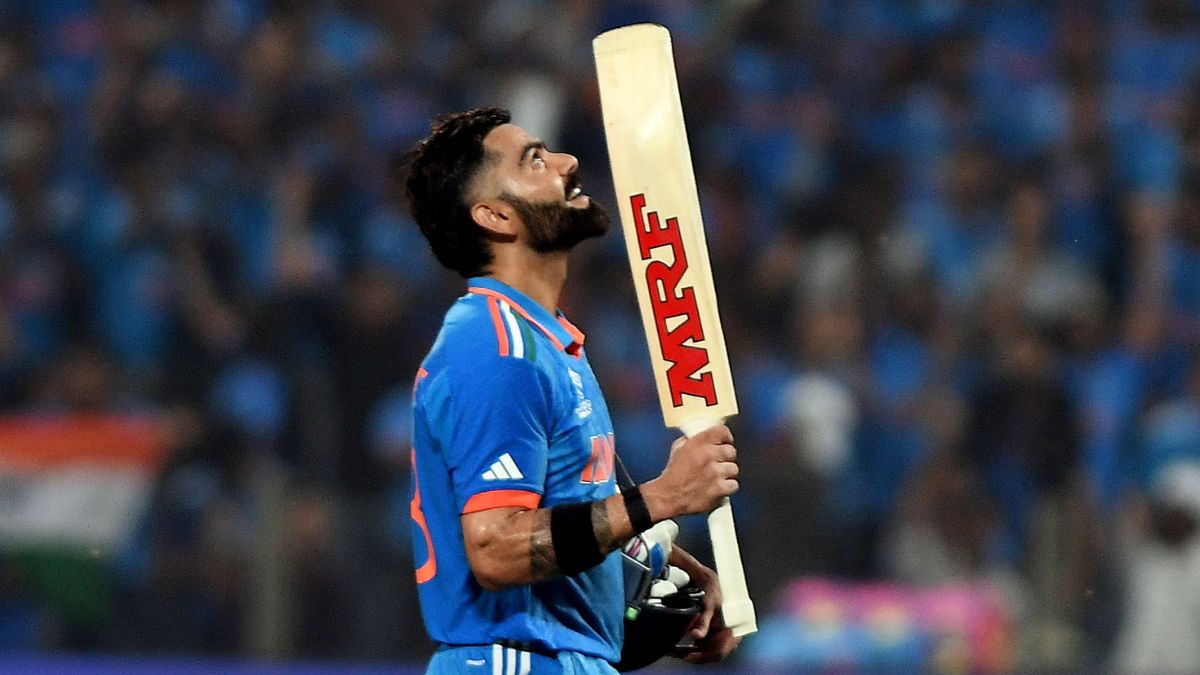
On Thursday, November 2, Virat Kohli achieved an accomplishment. He became the batsman to surpass 1000 runs in ODIs in 2023, following in the footsteps of Shubman Gill and Rohit Sharma. Not that,. He also joined Rohit Sharma, Shubman Gill, and Pathum Nissanka as the fourth players to achieve this impressive record in the 50-over format within the same year.
Stepping into History with 1000 Runs in ODIs
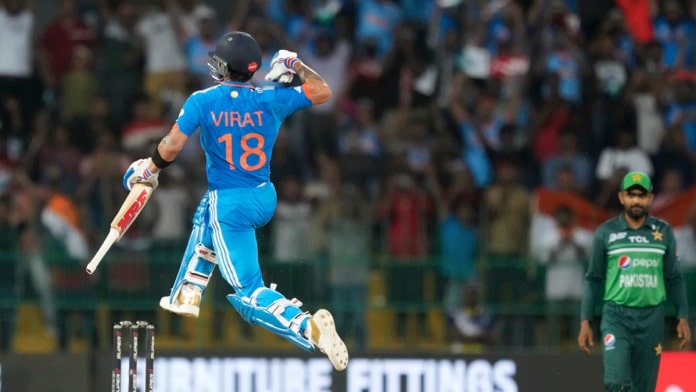
Entering the realm of history, Kohli’s unwavering determination and exceptional skills were put on display during his match in 2023. Notably, the cricket maestro, now 34 years old, made an indelible impact by surpassing Sachin Tendulkar‘s record, securing the most number of years with 1000 runs in ODIs. Kohli’s consistent ability to perform at such an exceptional level has been a defining characteristic of his illustrious career, as he had previously achieved this monumental milestone in 2011, 2012, 2013, 2014, 2017, 2018, and 2019, before accomplishing it once again in the present year of 2023.
Sachin Tendulkar with god of cricket Virat Kohli pic.twitter.com/zmztejNBBB
— Kevin (@imkevin149) November 2, 2023
An Unforgettable Journey
In an intense World Cup 2023 clash against Sri Lanka at the renowned Wankhede Stadium in Mumbai, Virat Kohli’s pursuit of this historic milestone was realized with an impressive 34 runs. Despite facing challenges, including a rare duck against England at the Ekana Stadium in Lucknow, his overall performance throughout the year has been nothing short of spectacular.
Kohli’s memorable journey was highlighted by an unbeaten century during India’s triumphant seven-wicket victory against Bangladesh at the Maharashtra Cricket Association (MCA) Stadium in Pune. Adding to his illustrious record, he solidified his stature with a brilliant 95 runs, making a significant contribution to India’s thrilling four-wicket win over New Zealand led by Tom Latham at the Himachal Pradesh Cricket Association (HPCA) Stadium in Pune.
Cricket
Shaheen Shah Afridi: Fastest to 100 ODI Wickets

Shaheen Shah Afridi, on Tuesday, October 31, achieved a remarkable feat, becoming the third fastest bowler to secure 100 wickets in ODIs. His outstanding performance during Pakistan’s World Cup 2023 match against Bangladesh at the renowned Eden Gardens in Kolkata led to this historic accomplishment.
A Landmark Moment
In the thrilling encounter, Shaheen clinched his 100th wicket in only his 51st match, dismissing Tigers’ opening batter Tanzid Hasan Tamim. The left-arm fast bowler displayed exceptional skill as he struck Tamim on the pads, prompting the on-field umpire to raise his finger. Despite Tamim’s referral to the third umpire using the Decision Review System (DRS), the replays confirmed the ball crashing into the stumps, upholding the on-field decision. Bangladesh lost their first wicket with the scoreboard reading 0 in just 0.5 overs.
Shaheen Afridi soars high yet again with another feat to his name 🦅#CWC23 | #PAKvBAN pic.twitter.com/IlQQ6P5xYK
— ICC Cricket World Cup (@cricketworldcup) October 31, 2023
Surpassing Preceding Records
Shaheen Shah Afridi not only secured this feat in record time but also outshone the accomplishments of esteemed bowlers preceding him. He surpassed the record of the fastest pacer, previously held by Mitchell Starc, who attained the milestone in August 2016 during an ODI against Sri Lanka at the R. Premadasa Stadium in Colombo.

Legacy of Excellence
Moreover, Shaheen shattered the long-standing record held by Saqlain Mushtaq, becoming the fastest Pakistani bowler to claim 100 wickets in ODIs. Saqlain had set this record on May 12, 1997, during an ODI against Sri Lanka in Gwalior. It is notable that among the Pakistani fast bowlers, the accomplished Shaheen Shah Afridi follows in the footsteps of the legendary Waqar Younis, who achieved the 100-wicket mark back in February 1993 against Zimbabwe in Sharjah.

Beyond ODIs
Demonstrating his prowess beyond ODIs, Shaheen has made significant contributions in Tests and T20Is as well. Since his debut in 2018, he has garnered 105 wickets in Tests and 64 wickets in T20Is. His exceptional journey began with a strong performance in the U19 World Cup in New Zealand. Notably, he played a pivotal role in Lahore Qalandars’ consecutive victories in the Pakistan Super League (PSL).
A Testament to Talent and Dedication
Shaheen Shah Afridi’s rapid rise to 100 ODI wickets within 51 matches underlines his exceptional talent and unwavering dedication to the sport. As he continues to leave an indelible mark on the cricketing world, his journey serves as an inspiration for aspiring cricketers worldwide. With his remarkable achievements, Afridi has solidified his place in the annals of cricket history, etching his name as one of Pakistan’s most formidable and promising fast bowlers.
Cricket
ICC World Cup: Shoaib Akhtar says, ‘Mai India ki tareef kyu na karu’

Former Pakistan fast bowler Shoaib Akhtar has recently expressed admiration for India’s dominant performance in the ongoing 2023 ICC World Cup. With India securing victories in all six matches, Akhtar highlighted the team’s exceptional display across various aspects of the game. Although the recent batting performance against England in Lucknow was relatively modest, India’s fierce bowling attack, led by Mohammed Shami and Jasprit Bumrah, proved instrumental in securing a remarkable win. This triumph not only solidified India’s leading position on the points table but also exacerbated England’s struggles in the tournament, leaving them virtually eliminated.
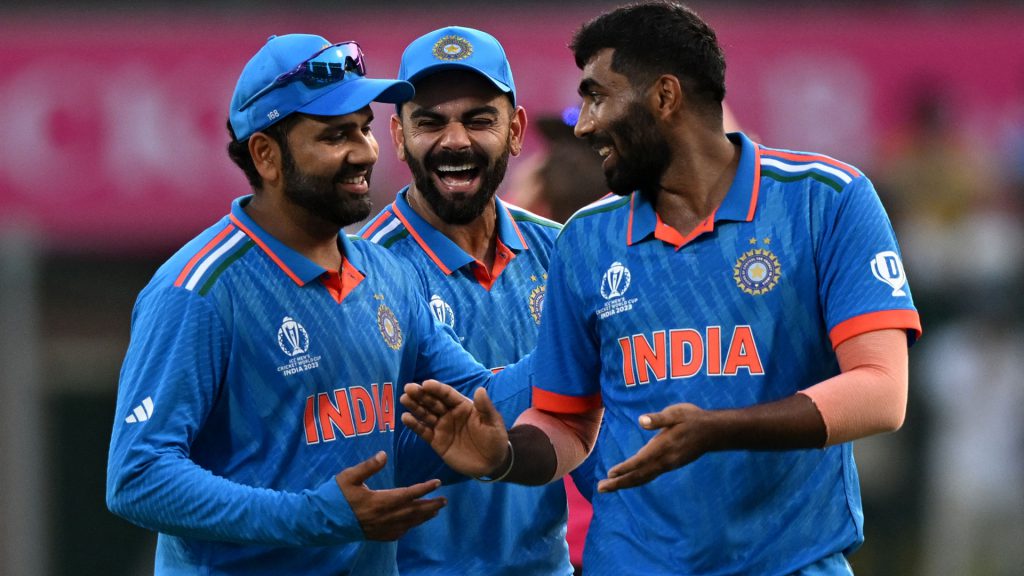
India’s Remarkable Bowling Transformation
In his analysis, Akhtar emphasized the transformative impact of Shami’s inclusion in India’s playing eleven following Hardik Pandya’s injury. Acknowledging Shami’s outstanding performances against New Zealand and England, Akhtar credited India’s ability to win matches through their bowling prowess, showcasing a shift from their traditional reliance on batting strength. He commended the collective effort of the Indian bowling unit, particularly recognizing the strategic brilliance of fast bowler Bumrah.
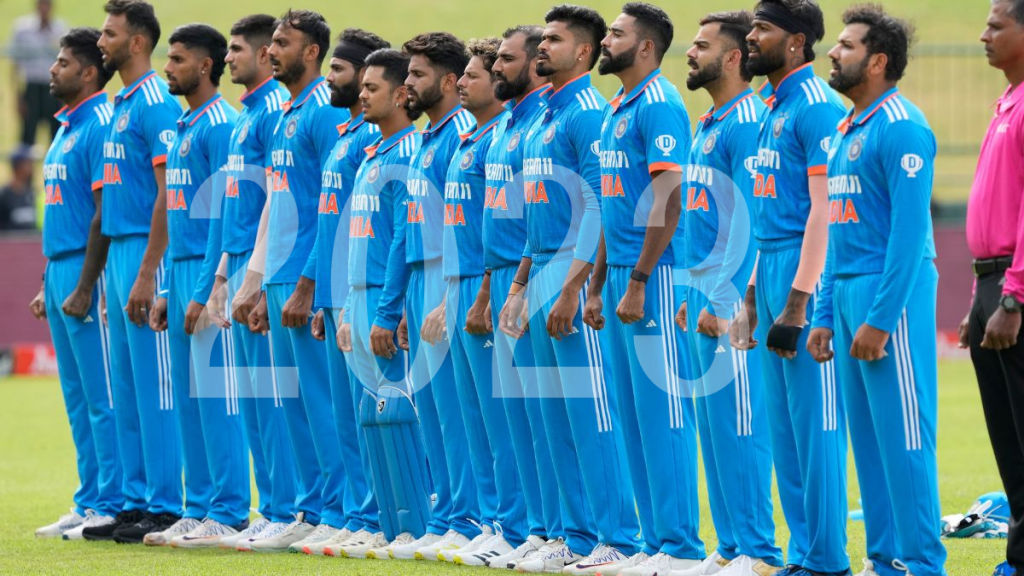
India’s Path to World Cup Glory
Looking ahead, Akhtar voiced his confidence in India’s potential to secure their third ODI World Cup trophy, highlighting the team’s upcoming matches against Sri Lanka, South Africa, and the Netherlands. Expressing optimism, he emphasized the significance of maintaining their unbeaten streak en route to the final, setting the stage for a potential historic ICC World Cup victory. However, Akhtar cautioned against compromising the successful bowling unit once Pandya returns to full fitness, warning against the potential detriment of a partially fit Pandya’s inclusion at the expense of a bowler.
Akhtar’s Praise for India and its Response to Criticism
Addressing skepticism surrounding his praise for the Indian team, Akhtar reiterated the exceptional nature of India’s performance, particularly in their ability to defend a modest total with a significant margin of victory. Undeterred by criticism, Akhtar reaffirmed his admiration for India’s exceptional cricketing prowess, urging acknowledgment and appreciation of their commendable achievements.
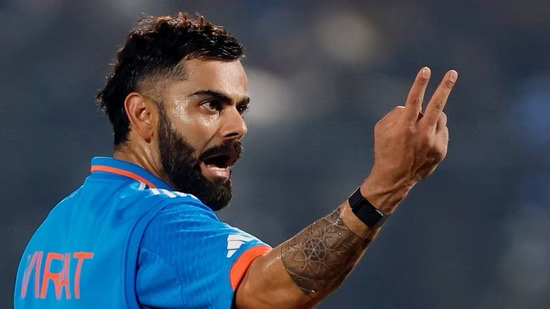
Shoaib Akhtar’s Perspective on Virat Kohli
Shifting focus, Akhtar’s history of praise extends beyond team performances to individual players, notably including former Indian team captain Virat Kohli. Reminiscing on Kohli’s resilience during a challenging phase in his career, Akhtar highlighted the pivotal role played by Kohli’s consistent century-scoring performances, leading to India’s victories. Recognizing Kohli’s contribution to the team’s success, Akhtar emphasized the significance of Kohli’s monumental centuries during crucial chases, solidifying his status as a crucial asset for the Indian cricket team.
In a comparison between Kohli and the legendary Sachin Tendulkar, Akhtar acknowledged Tendulkar’s status as one of the greatest batsmen while highlighting the challenges Tendulkar faced as a captain. Drawing parallels, Akhtar expressed confidence in Kohli’s eventual resurgence, expecting him to return to his prolific scoring form once he finds his equilibrium.
In summary, Akhtar’s acknowledgment of India’s exceptional performance and his recognition of individual players’ contributions underscore the team’s formidable presence in the 2023 ICC World Cup, setting the stage for a potential historic triumph in the coming days.







You must be logged in to post a comment Login